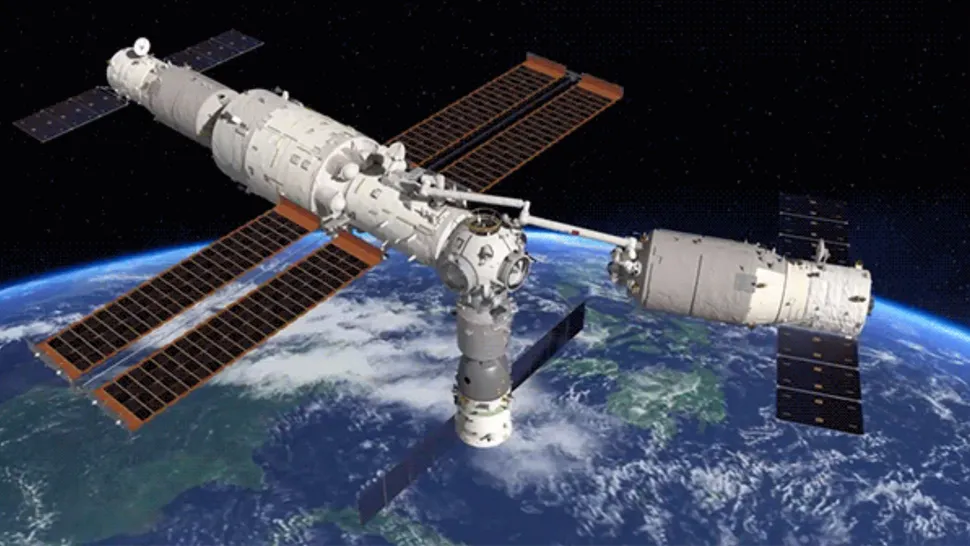Bloc mentality and warfare in SPACE
Your 5-minute weekly dose of geopolitics in a straight-to-the-point and illustrated format. Enjoy!
I) There is currently an arms race in space that continues geopolitical tensions in a new environment
A. The militarisation of space is undeniable
Space offers multiple scientific, economic and military opportunities. That’s why States have invested in their defence industries to develop the means to protect their current and future interests in space. To do so, they increasingly rely on the private spatial industry (aka New Space) to innovate and develop, for instance, satellites able to spy, interfere with other satellites’ signals, and even destroy enemy satellites. For instance, China has developed a robotic arm to equip its space station in order to be able to neutralise other satellites. As for Russia, it is allegedly working on an anti-satellite weapon.


As a matter of fact, satellites have been integrated into military doctrines since the 1990s. During the 1991 Gulf war, they were used for reconnaissance operations. In 1999, in Kosovo, satellites contributed to the conduct of operations on the ground. Nowadays, space is used for military communication, intelligence collection and surveillance, support for nuclear deterrence (targeting and guiding), and by ballistic missiles travelling through outer space.
Another sign of the importance given to space by world powers’ military is the creation in 2019 of the Space Force in the US and of the Space Command in France.

B. The bloc mentality still predominates in space
The superpower rivalry that existed between the US and the USSR during the Cold War, with regard to space travels and the Moon, appears to be far from over.
In 2017, the US started signing the Artemis bilateral accords with other States to promote industrial and scientific cooperation and prevent conflicts. So far, 49 countries have signed this accord with the US. As you may have guessed, China and Russia are not amongst the signatories.

Austria signing the Artemis Accord in December 2024, thus becoming the 50th signatory
China and Russia reacted in 2021 by launching the International Lunar Research Station (ILRS). The ILRS is a joint program aiming at eventually establishing a scientific laboratory at the surface of the moon or in its orbit. This program has been joined by 11 other countries that you can see on the following map:

II) The lack of adequate legal framework could lead to an increase of tensions in space
A. International law is incomplete and too vague
International law turns out to be vague regarding activities authorised in outer space. The 1967’s Outer Space Treaty (signed by over 100 countries including the US, China, Russia, the UK and FRA) insists on two key principles :
- Non-appropriation of space;
- Pacifism.
However, it doesn’t define precisely what constitutes an act of aggression in space. Therefore, one has to turn to Article 8 bis (crime of aggression) of the Rome Statute of the International Criminal Court. However, this article is short of provisions on space activities and the Rome Statue not ratified by global powers like the US, China or Russia.
Furthermore, the 1967’s Outer Space Treaty doesn’t reckon with technological evolutions. What is feasible in this early 21st century was probably not imagined by the treaty’s drafters half a century earlier.

B. The continuation of hybrid warfare in space?
As States will probably compete for the control of space, technological superiority may enable a State or group of States to eventually de facto appropriate space. However, this control will probably never be complete. Indeed, we may witness the advent of guerrilla warfare in space with States, and private companies acting as proxies for them, applying hybrid warfare tactics. They may resort to various means, like military, diplomatic, technologic, economic or informational means, in order to harass their enemies’ space systems while remaining under the threshold of war. For instance, it is already difficult to distinguish between civilian and military satellites, essential to know what constitutes a legitimate target under international law, as they often perform both civilian and military tasks (dual-use satellites).




1 Comment
Is INDIA a threat for CHINA? – geopol-trotters · 23 April 2025 at 3:34 pm
[…] and military capabilities far exceeds that of India, particularly when it comes to the space industry and the development of hypersonic […]